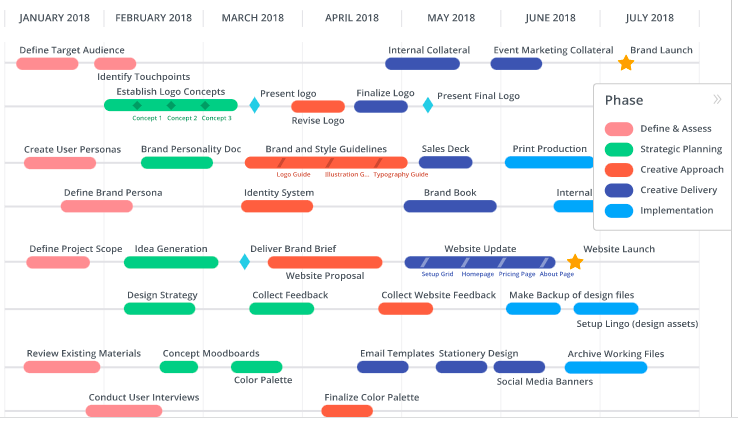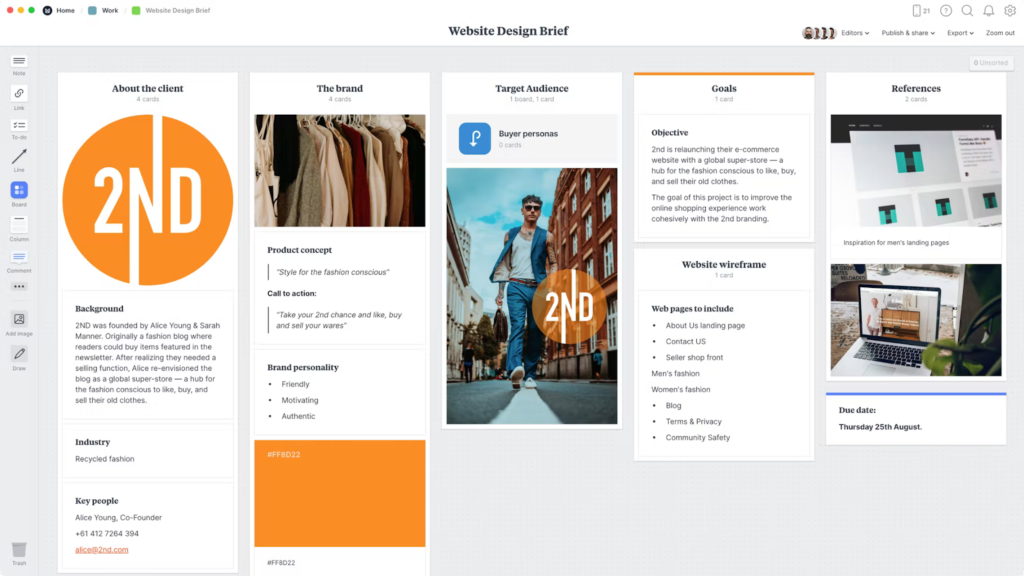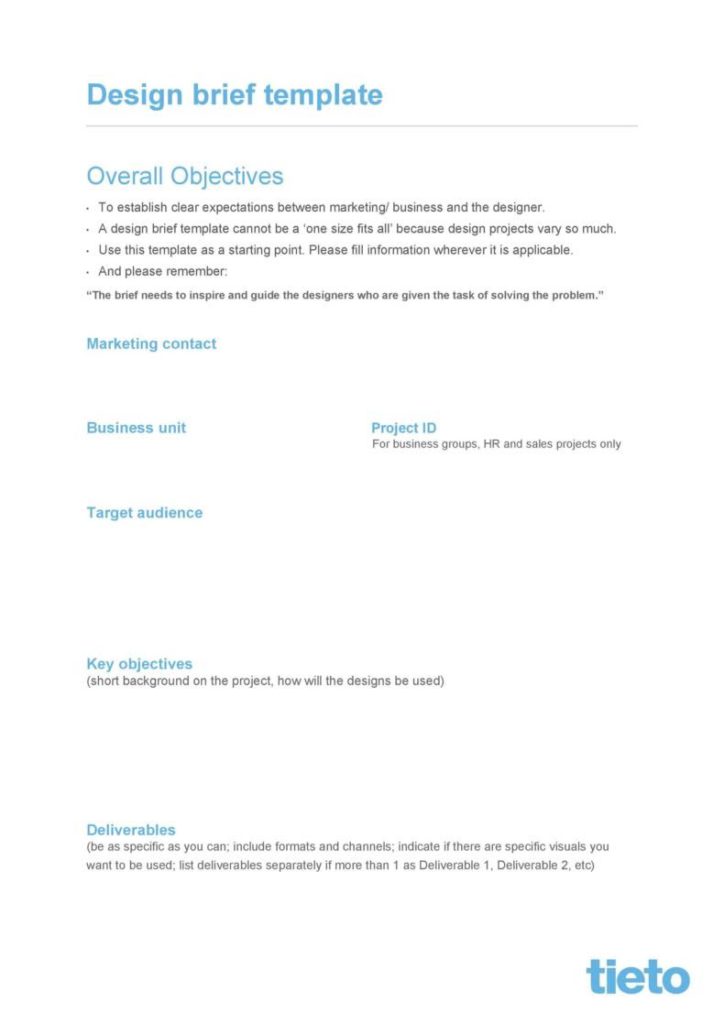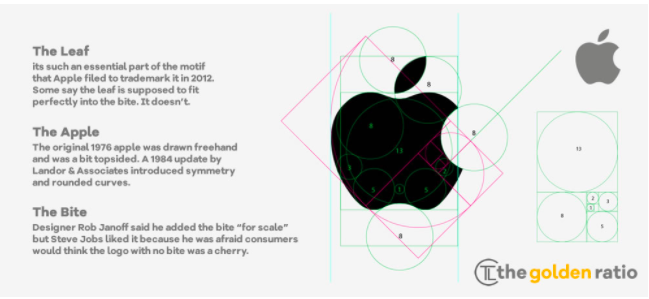How to Write a Design Brief to Outsource a Design Project

Table of Contents
- What Is a Design Brief?
- Who Should Write a Design Brief?
- An Example of a Design Brief
- How to Write a Design Brief: 5 Tips
- Key Takeaways
- Conclusion
- FAQs
How would you give directions to a new destination? You would be clear about the starting and ending points. You would describe the most efficient routes, landmarks, and transport options available.
It’s the same when you’re learning how to write a design brief. A design brief essentially helps the design team create a roadmap to a winning project. It outlines expectations and provides overall direction. It’s an essential document for your design team to do a terrific job.
Senior marketing consultant Fiona Lomas says that if a design brief is unclear, full of non-essential information, and without the right consumer insights, even the best designers will struggle to do great work. Attached below is a design roadmap for you to get a better idea.

What Is a Design Brief?
Let’s understand what a design brief is and who should write it, with a helpful example. A design brief is a document that lays out the need, scope, and scale of a project. It spells out the vision and goal. It contains the design specifications and client expectations. Quality standards are another important ingredient in a design brief.
When considering how to write a design brief, you should include the necessary background of a project. This could be a profile of the end-consumer and the competition. Often, design teams require this information to create a project that stands out.
A design brief can also mention no-go areas. For example, it can include unacceptable formats or specifications that do not match existing technology. As the team over at Slimdesign puts it: “A good design brief saves development time, mitigates risk, and reduces costs.”

Who Should Write a Design Brief?
Ideally, the client should write the design brief and seek inputs from the design team. However, before it is written, the client needs to take inputs from all the project stakeholders.
These stakeholders include the project manager, technical and finance personnel, and anyone else that the project will have an impact on. There could also be external stakeholders. These include consultants, market researchers, and sometimes, authorities who have to enforce standards and regulations.
An Example of a Design Brief
Let’s understand, for instance, how to make a design brief for an eCommerce website. To begin with, it should mention the brand vision and guidelines. Then come the consumer demographics and psychographics.
It will contain expected site traffic and projected rates of conversion and retention. Further, it should touch upon features, such as photographs and videos. On the technical side, it will have details of the software platform the design team needs to keep in mind. Website design for eCommerce has a combination of elements, including design style options, page hierarchy, overall website map, and color and font suggestions, among other things. Here’s an example of an eCommerce design brief.

How to Write a Design Brief: 5 Tips
Design brief writing is made simpler if you know the specific elements involved. We have put together a list for you to understand how to write a design brief effectively.
1. Establish a company profile
This is useful for the design team to get necessary information about the project. The profile section can include aspects such as the sectors the company does business in, types of products and services, and perception of the brand. It’s also important to mention specific challenges, and what the competition is doing.
2. Include a project overview
This section should contain essential details of the design project. It should mention the scope of work, start and finish times, and the elements the team is supposed to work on. Any earlier successful projects can be mentioned so that the design team has a clear idea of expectations.
3. Clearly outline your goals and objectives
You should include the primary reason for undertaking the project. What are the parameters by which it will be judged? Is the aim to get more leads, conversions, or sales? Or is it simply to boost traffic? Are there other metrics the design team should be aware of? In this section, inputs from all stakeholders are vital.
4. Take time to understand your target audience
The team should understand for whom the project is meant. This will determine design choices. Is it people who are fashion-conscious, budget-savvy, or with high purchasing power? Do they stay in large cities or small towns? Do they access the web on mobile phones or desktops? Such questions help paint a picture of the person who will be taking up the job.
5. Lay down specific design requirements
This section should contain specifications of design elements. Some examples are image resolution, video size, loading times, and accompanying copy. It’s also useful to mention references, either of past work or the competition. These elements can be discussed with the design team. It can minimize the risk of revisions or unsuitable formats. There are many templates on how to make a design brief. These are divided into the types of design, product type, etc.

Key Takeaways
- A design brief is a critical document when outsourcing a design project.
- It is more like a map that explains how to get to the project destination. Without it, the design team will not be aware of the best way to proceed.
- Design brief writing is often done by a senior member of the client’s team. It is a collaborative exercise that contains inputs from key stakeholders.
- The elements a design brief should contain are company profile, project overview, goals and objectives, target audience, and design requirements.
- Many pre-existing templates make learning how to write a design brief simple.
- In a well-written design brief, schedules and deadlines are laid out, budgets are clarified, and expectations are aligned.
Conclusion
In a manufacturing process, it’s said that the quality of the output depends on the quality of the input. It’s the same with a design project. A design brief is a vital input. When outsourcing a design project, the design team is often not in the same location as the client. That’s why it’s essential for a design brief to contain all the required elements. They can then proceed with the job in an appropriate manner, without the need for constant supervision.
When thinking of how to write a design brief, it helps to keep in mind the words of Rob Janoff, the man who created the Apple logo. He said that to get a result that embodies your brand, designers need to know about you, your business, and your taste. “The answers to these questions will help your designer understand your needs to craft a logo as quickly and elegantly as possible.”

FAQs
A design brief is written by a senior person on the client’s side. It is created after consulting the internal and external stakeholders involved. The contents include the need for the project, along with the expectations and quality standards. It also specifies design parameters and deadlines and provides an overall direction to the team.
A design brief should contain the following five elements.
Company profile
Project overview
Goals and objectives
Target audience
Design requirements
A good design brief should be comprehensive, with all the information the design team needs to be aware of. It should also be concise, clear, and focused on the project’s objectives. All parties should understand the nature of the project, resources, and the parameters by which it should be judged.
Let’s take an app for online education. In this case, the design brief should contain the following details.
Background: the need for the app, the sections, and details of similar apps.
Objectives: the subjects the app covers, and the value it will give the user. It should mention the number of sign-ups anticipated, as well as expectations of the number of paid subscribers.
Design specifications: Brand elements, such as color, typeface, and content style. App navigation, photographs, and videos can be detailed.
Target audience: is the app for students or executives? Is it a supplement to their existing education? Will they benefit in terms of employment opportunities or upskilling?
Functionality: the design brief should mention whether the primary use will be on desktop or mobile. What platforms and systems should the design elements be compatible with?
Generally speaking, design brief architecture is the step-by-step flow of information that is provided in a design brief. It usually starts with the details of the client’s work. It goes on to define the specific type of project, expectations, specifications, resources, and deadlines. A design brief contains the extent of work, with a schedule for design, documentation, and construction. Key milestones and deliverables are an essential part as well.
It is a project document with details of requirements, along with budgets and deadlines. Common elements are space, use, look, and facilities. This type of design brief is linked to design and construction contracts. It is a point of reference for all stakeholders involved in the business. It also lays out specific roles and responsibilities.
Latest Blogs
In this blog, explore the golden rules of using AI marketing tools so you can leverage the benefits to their maximum potential.
In this blog, you’ll learn how to avoid the pitfalls of SEO over-optimization while enhancing your site’s performance.
In this article, we’ll take a look at what AMP is, its advantages and disadvantages, and how it affects SEO.
Get your hands on the latest news!
Similar Posts

Design
7 mins read
15 Best Firms Offering Design Services in India

Design
5 mins read
All You Need to Know About Data-Driven Design

Design
6 mins read